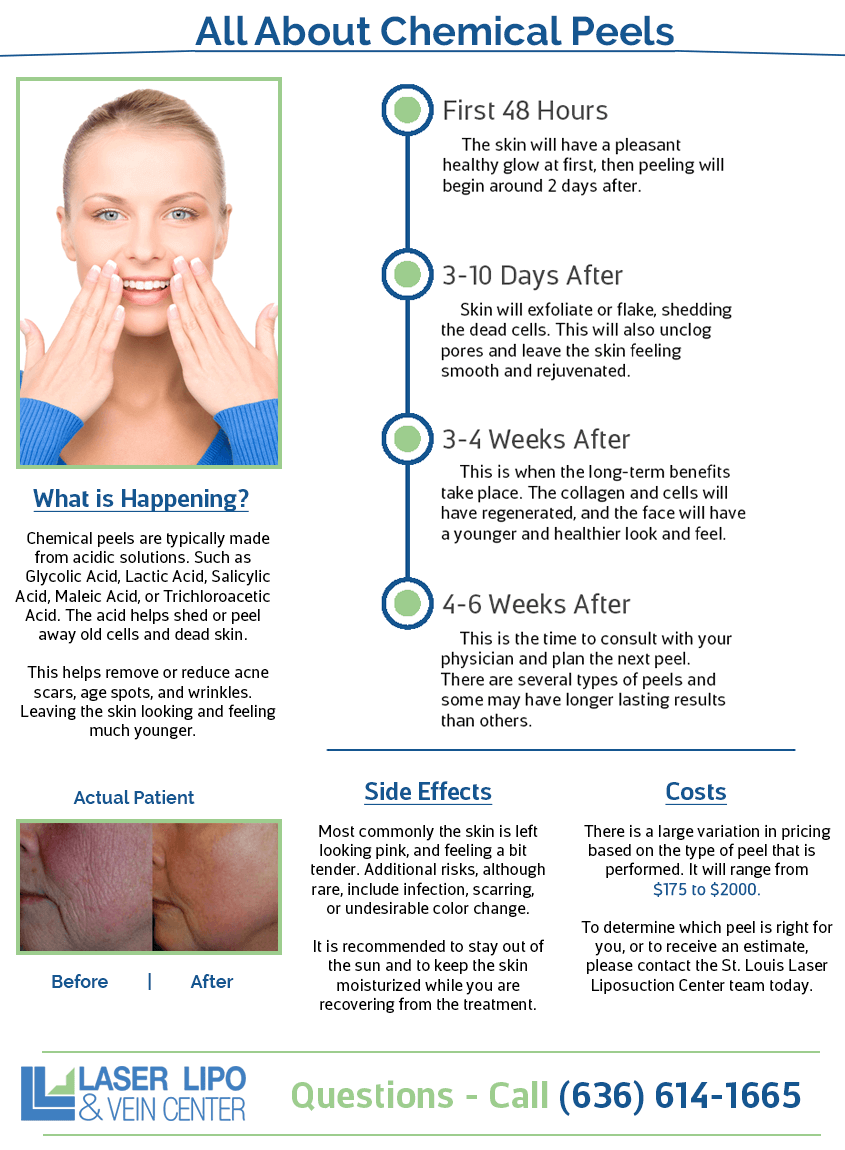As men and women naturally age, it’s normal for the quality of facial skin to alter. While much of our skin is protected under clothing during the day, our faces are primarily exposed to the elements during our waking hours. Under the wear and tear of environmental factors including sun exposure and even air pollution, skin cell renewal slows down and results in the development of features such as wrinkles, fine lines, age spots, and sagging skin. While these changes can be expected under the circumstances of time, the aesthetic results don’t often line up with how youthful an individual may feel on the inside. Those searching for a highly effective and safe solution to rejuvenating facial skin for an overall brighter, smoother look may find the effects of chemical peels exactly what they’re looking for. Learn more about Chemical Peels below!

Understanding Chemical Peels
Much of the skin damage caused by external factors affect the top layer of skin. It’s here that the most visible changes occur and can lead to dissatisfaction on an aesthetic level. The key to working towards a more youthful appearance when it comes to facial skin is to get below the surface and promote healthy skin rejuvenation and cell growth. Chemical peels achieve this by going well beyond a surface cleansing and removing the top layer of dead skin completely to stimulate the production of new skin cell growth below. Chemical peels are manufactured from acidic solutions which can be formulated to remove dead skin cells to a specified level depending on the area of the body being treated. At its most basic, a chemical peel removes the old to reveal the new. Many patients elect to be treated with chemical peels when they suffer from acne, acne scarring, age spots, uneven skin tone, fine lines, and moderate wrinkles.
Chemical Peel Categories
Depending on how severe skin damage initially presents, the physician or esthetician performing a chemical peel will select a level of treatment that varies in intensity. Categories of chemical peels range from mild to extreme and the type of treatment a patient undergoes is highly dependent on their skin type and tendency to reactions. It’s important that before a patient undergoes any type of chemical peel, a thorough skin analysis is carried out to ensure optimum results. Selecting the best type of chemical peel looks vastly different from patient to patient, making an initial consultation imperative.
Patients should always be aware that chemical peels include many types of active ingredients including glycolic, lactic, salicylic, maleic and trichloroacetic acids. Glycolic acid is highly useful at treating damage to the outer layer of skin which often originates with UV rays. Patients who require a light chemical peel exclusively will often be treated with a glycolic acid peel. Patients who require a moderately intense chemical peel benefit from solutions that include trichloroacetic acid, which has the ability to dive further below the skin’s surface to tackle acne, fine lines, and mild wrinkles. Deep phenol peels are a more intense and comprehensive treatment option with the power to take on multiple levels of skin damage simultaneously. While the results are generally further reaching, patients who select this type of peel may experience a longer recovery time and will often need to wait for 12-weeks to see the full benefit of results.
Chemical Peel Results
Patients who undergo mild to moderately intense chemical peels generally report visible results immediately after treatment with the majority of benefits showing up within a week or two following a session. While a single chemical peel can be effective, most physicians and estheticians recommend a long-term plan to keep skin looking it’s best and brightest for years to come. On average, patients can expect to return for sessions once every three months to maintain optimal results. Patients should always keep in mind that a long-term treatment plan and session schedule is highly dependent on skin type and condition.
Safety
Chemical peels have long been used to treat skin conditions and are popular amongst patients for their great safety record as well. The most common side effect of a chemical peel is pink skin that is slightly sensitive to the touch. However, most patients report these symptoms and side effects disappearing within a few days following treatment. It is highly advisable that patients who undergo chemical peels remain out of the sun and moisturize regularly after a session.
Cost of Chemical Peels
While the final cost of a chemical peel is very dependent on factors such as skin condition and intensity of treatment, most patients can expect to pay somewhere between $175 and $2,000 to achieve the results they are looking for.
Begin Your Journey
When you’re considering the personal benefits of a chemical peel, be sure to contact Dr. Wright and his team at the St. Louis Laser Lipo and Vein center to schedule an initial consultation. We take the time to evaluate each patient’s medical history while providing a comfortable space in which to answer questions, state preferences and understand your many options at our comprehensive clinic.